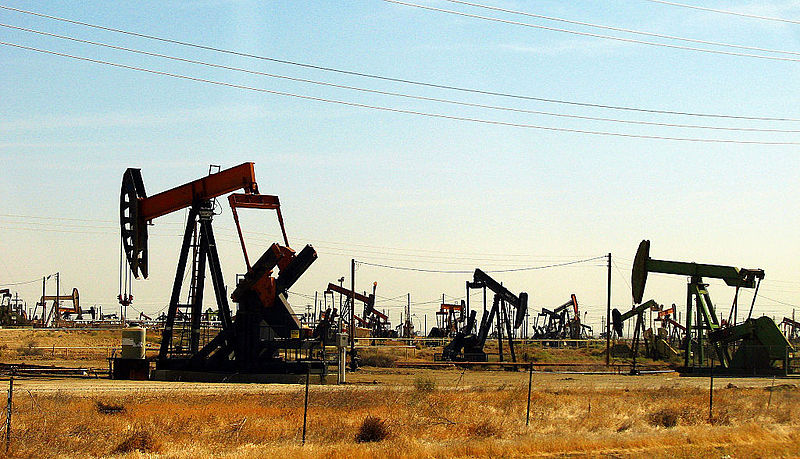Eleven states - members of the club in March fulfilled the terms of the agreement to reduce oil production by 104 percent, concluded Reuters on the basis of the oil cartel’s reports. This figure coincided with estimates from third-party sources.
In its report, OPEC also pointed to a decline in oil reserves in February and generally gave a positive forecast for the oil market’s recovery.
"Despite the downside risks, the overall forecast for growth in demand for petroleum products in the coming months remains positive", the report said. "The end of the repair season at the refinery and stable demand multiplied by the high commitment of OPEC + production reduction commitments should improve market stability and reduce the volatility observed in recent weeks. "
Compared to February, OPEC countries reduced production in March by 152.7 thousand barrels, to 31.928 million barrels per day. In particular, Saudi Arabia increased its production in March compared to February by 41.6 thousand barrels, to 9.994 million barrels per day, Iraq in March reduced production compared to the previous month by 8.5 thousand barrels, to 4.402 million barrels, while the United Arab Emirates reduced production in March by 32.7 thousand barrels, to 2.895 million barrels per day.
OPEC and 11 non-cartel states, including Russia, agreed in December 2016 to reduce production during the first half of the year by a total of 1.8 million barrels per day.
Now, OPEC is pondering extension of the global oil pact to the second half of 2017. Most members of the cartel, including Saudi Arabia and Kuwait, are ready to support this initiative, provided that it is joined by miners outside the club, sources told in March.
In addition, OPEC corrected the forecast for world oil demand in 2017.
According to the updated forecast, the demand for oil in 2017 will be 96.32 million barrels per day, compared to 96.31 million barrels per day, according to the March assessment.
At the same time, forecast for growth in world demand in 2017 increased by 10,000 barrels per day and now the global oil demand is expected to grow by 1.27 million barrels per day in relation to 2016.
Meanwhile, Bloomberg, citing a source close to the kingdom’s leaders, reports that Saudi Arabia is likely to support extension of the OPEC oil production cutoff for another six months.
The organization of oil-exporting countries plans to meet in Vienna on May 25 to discuss whether to extend the deal to reduce production for the second half of 2017. Several OPEC countries, including Kuwait, have already supported the extension.
Since the oil freeze agreement entered into force, the world oil reserves have decreased by approximately 20 million barrels. This was announced April 11, 2017 by the Secretary General of OPEC Mohammed Barkindo.
This reduction is negligible given that the freeze agreement has been lasting for almost 3.5 months.
According to Mr. Barkindo, the world reserves of hydrocarbons are still 260 million barrels higher than the desired level.
At that, the cartel’s representative accused the US in preventing attempts of the countries-participants of the agreement to stabilize the world market.
Mohammed Barkindo believes that the American shale producers have increased oil production, thereby preventing the world's reserves from shrinking to the proper extent.
After reaching an agreement on a deal between OPEC and 11 countries, Brent oil went up by 20%, but the rally slowed in March after reports of increased production and reserves in the US.
source: reuters.com, bloomberg.com
In its report, OPEC also pointed to a decline in oil reserves in February and generally gave a positive forecast for the oil market’s recovery.
"Despite the downside risks, the overall forecast for growth in demand for petroleum products in the coming months remains positive", the report said. "The end of the repair season at the refinery and stable demand multiplied by the high commitment of OPEC + production reduction commitments should improve market stability and reduce the volatility observed in recent weeks. "
Compared to February, OPEC countries reduced production in March by 152.7 thousand barrels, to 31.928 million barrels per day. In particular, Saudi Arabia increased its production in March compared to February by 41.6 thousand barrels, to 9.994 million barrels per day, Iraq in March reduced production compared to the previous month by 8.5 thousand barrels, to 4.402 million barrels, while the United Arab Emirates reduced production in March by 32.7 thousand barrels, to 2.895 million barrels per day.
OPEC and 11 non-cartel states, including Russia, agreed in December 2016 to reduce production during the first half of the year by a total of 1.8 million barrels per day.
Now, OPEC is pondering extension of the global oil pact to the second half of 2017. Most members of the cartel, including Saudi Arabia and Kuwait, are ready to support this initiative, provided that it is joined by miners outside the club, sources told in March.
In addition, OPEC corrected the forecast for world oil demand in 2017.
According to the updated forecast, the demand for oil in 2017 will be 96.32 million barrels per day, compared to 96.31 million barrels per day, according to the March assessment.
At the same time, forecast for growth in world demand in 2017 increased by 10,000 barrels per day and now the global oil demand is expected to grow by 1.27 million barrels per day in relation to 2016.
Meanwhile, Bloomberg, citing a source close to the kingdom’s leaders, reports that Saudi Arabia is likely to support extension of the OPEC oil production cutoff for another six months.
The organization of oil-exporting countries plans to meet in Vienna on May 25 to discuss whether to extend the deal to reduce production for the second half of 2017. Several OPEC countries, including Kuwait, have already supported the extension.
Since the oil freeze agreement entered into force, the world oil reserves have decreased by approximately 20 million barrels. This was announced April 11, 2017 by the Secretary General of OPEC Mohammed Barkindo.
This reduction is negligible given that the freeze agreement has been lasting for almost 3.5 months.
According to Mr. Barkindo, the world reserves of hydrocarbons are still 260 million barrels higher than the desired level.
At that, the cartel’s representative accused the US in preventing attempts of the countries-participants of the agreement to stabilize the world market.
Mohammed Barkindo believes that the American shale producers have increased oil production, thereby preventing the world's reserves from shrinking to the proper extent.
After reaching an agreement on a deal between OPEC and 11 countries, Brent oil went up by 20%, but the rally slowed in March after reports of increased production and reserves in the US.
source: reuters.com, bloomberg.com



















